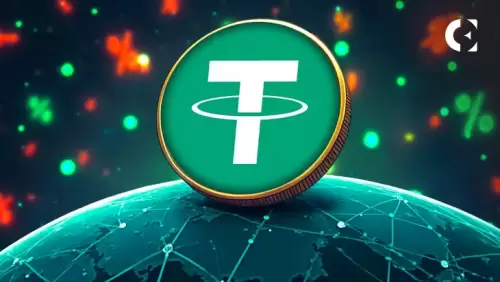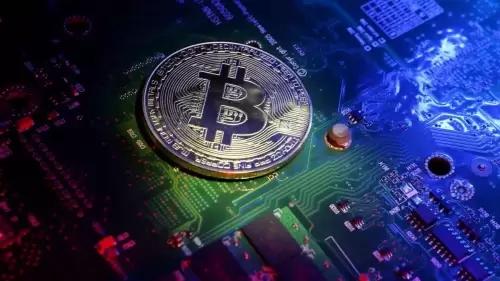 |
|
 |
|
 |
|
 |
|
 |
|
 |
|
 |
|
 |
|
 |
|
 |
|
 |
|
 |
|
 |
|
 |
|
 |
|

Solana (SOL) has emerged from one of its most turbulent periods to date.
Stress-tested in Q1 2025 by an unprecedented wave of memecoin launches on platforms like Pump.fun, the network faced both extraordinary transaction volume and congestion. It saw tens of thousands of new tokens like TRUMP (for former President Donald Trump) and MELANIA (for Melania Trump) launching in just a few months, bringing billions of dollars on-chain through millions of transactions.
It was a real test of how Solana would perform under pressure. But rather than faltering, the network adapted and improved. From this intense period of on-chain activity, a more resilient blockchain has emerged—one that’s increasingly being seen not as a “memechain” but as a foundational layer for stablecoins and real-world payments.
The memecoin stress test
Memecoins, despite their speculative nature, served a valuable purpose: they pushed Solana’s infrastructure to the limit.
During the January peak, tokens like TRUMP and MELANIA helped drive Solana’s decentralized exchanges to a near-record $40 billion in 24-hour trading volume. Together, these two meme tokens reached a combined fully diluted valuation (FDV) of nearly $70 billion—larger than many publicly listed companies. This sent the daily trading volume on Pump.fun past the $5 billion mark, which is higher than Coinbase.
This onslaught did expose certain issues: validators hit compute limits, RPCs throttled, and trading bots struggled to keep pace. But, in response, Solana’s core developers shipped staking-weighted Quality-of-Service to prioritize honest traffic, QUIC networking fixes to reduce packet loss, and advanced priority fees so users could cut the line transparently.
In short, the network’s foundational thesis—that better hardware leads to better scalability—held up well under pressure.
Stability over speculation
Now that the memecoin tide has ebbed, the real opportunity is clear. Stablecoins—reliable, dollar-pegged digital cash—are rapidly growing on Solana. The network’s outstanding stablecoin float is now at an all-time high of around $12.7 billion, which is more than double the figure from a year ago and puts it within striking distance of Ethereum’s peak.
Why the influx? Solana is the first L1 that combines sub-second finality, fractions-of-a-cent fees, and battle-tested throughput.
There are no roll-ups, there’s no waiting around, micro-payments are finally economical, and throughput has been thoroughly proven during the memecoin frenzy of Q1. The chain is ready for money markets and payment rails—exactly what mainstream users and regulators require.
Real-world rails are already here
Take USDG, for example. This stablecoin, issued by Paxos Digital Singapore and designed to be compliant with the Monetary Authority of Singapore’s upcoming stablecoin regulatory framework, is now live on Solana, giving fintech firms a way to transfer US dollars globally in seconds for a fraction of a cent. Cheap, final settlement at internet speed is no longer just a theory, but a reality.
And then there’s Franklin Templeton’s OnChain US Government Money Fund. One of the world’s largest asset managers is tokenizing money-market shares on Solana because the chain’s throughput and custody tooling already feels familiar to traditional finance operations teams.
Collectively, these heavy hitters aren’t chasing memes; they’re chasing the $20 trillion global payments market that Statista pegs for 2025. If even 1% of that lands on Solana, it would eclipse today’s entire crypto market cap—and it’s the stability of these new rail-builders that will decide the volume.
Firedancer: The next upgrade
There’s more good news in the pipeline, too. Later this year, Jump Crypto’s independent validator client, Firedancer, lands on mainnet, which promises 50x faster block propagation and a design ceiling of 1 million transactions per second.
For stablecoin issuers and payment providers, Firedancer could be a game-changer: it offers deterministic finality, even during Black Friday-level transaction spikes. For Solana builders, meanwhile, the upgrade is the green light to aggregate liquidity across a wide range of automated market makers, order-book DEX, and RFQ venues without any throughput constraints.
A call to builders
Memecoins were a stress test. Stablecoins are the real opportunity. For developers working on wallets, payment apps, remittance tools, or trading infrastructure, Solana is optimized and ready, and now the next phase begins. In fact, it wouldn’s be too far-fetched to say that this is what the blockchain has been preparing for all along.
Where memecoins generated attention, stablecoins promise adoption. Solana has shown it can handle volume, and with Firedancer on the horizon, it
부인 성명:info@kdj.com
제공된 정보는 거래 조언이 아닙니다. kdj.com은 이 기사에 제공된 정보를 기반으로 이루어진 투자에 대해 어떠한 책임도 지지 않습니다. 암호화폐는 변동성이 매우 높으므로 철저한 조사 후 신중하게 투자하는 것이 좋습니다!
본 웹사이트에 사용된 내용이 귀하의 저작권을 침해한다고 판단되는 경우, 즉시 당사(info@kdj.com)로 연락주시면 즉시 삭제하도록 하겠습니다.






























































